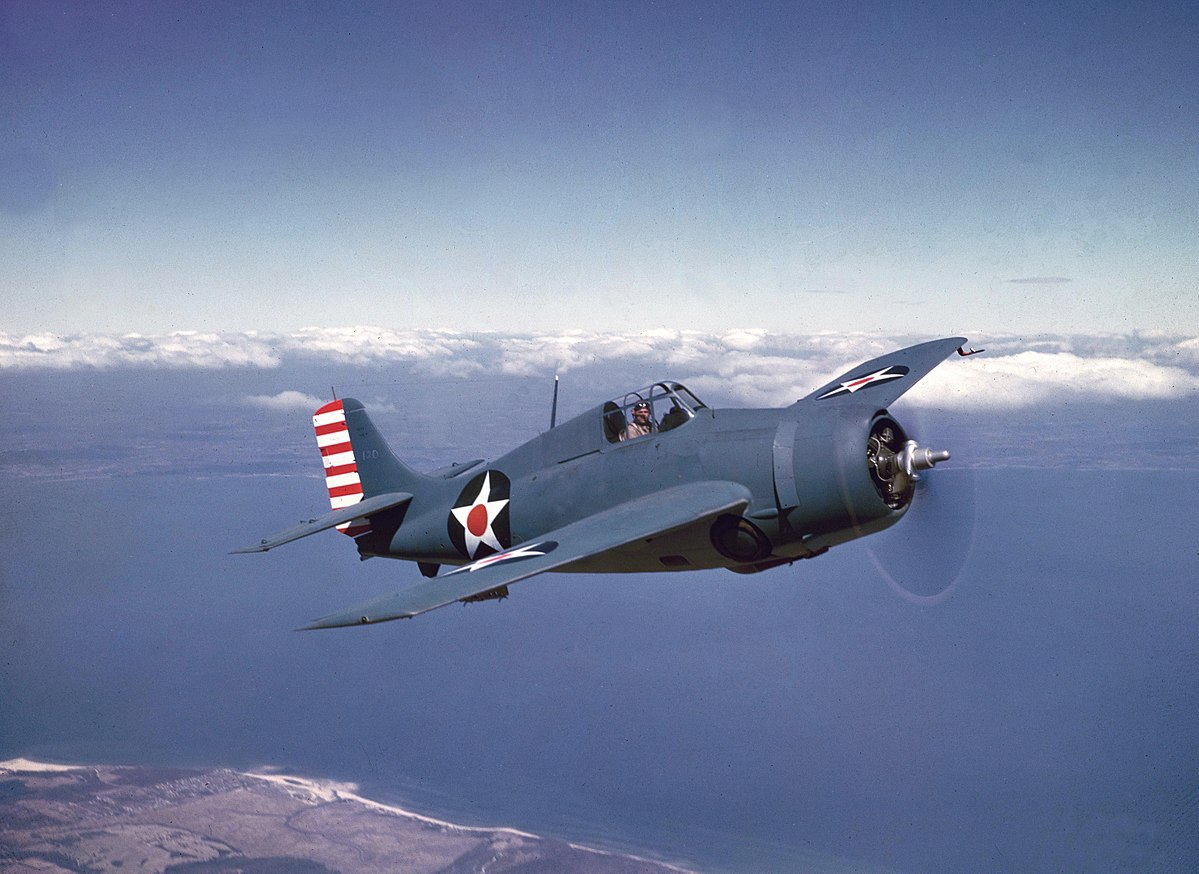Originally used by British in Europe, Grumman F4F Wildcat remained one of the most useful US aircraft in the pacific region in World War 2. It was built by General Motors as a biplane-only design, which would explain the visual appearance of the stout fuselage (originally designed to carry two sets of wings and not one). Performance-wise, being a the compact design, the F4F was theoretically not able to match the speed and maneuverability of its Japanese counterpart, the “Zero”, but its ability to sustain damage and superior armament, ensured that it was not any easy thing to nail down. The talented pilots and tactics complimented its superiority.
There were a number of variants of F4F Wildcat. They were F4F-1/-2, F4F-3, F4F-3S, F4F-4, F4F-7, Martlet Mk.I, Martlet Mk.II and Martlet Mk.III. All versions used fuselage mounted, hand-cranked landing gear with a relatively narrow track. This may have caused few accidents because the landing gear was not fully locked into place.
In a U.S. Navy competition, the F4F-1’s unbuilt biplane design was beaten the monoplane Brewster F2A-1 “the Buffalo” design. This remodeled the Wildcat into the monoplane XF4F-2. Although the XF4F-2 was marginally faster, still the Buffalo was chosen for production. Grumman’s prototype was then rebuilt as the XF4F-3 with new wings and tail and a supercharged version of the Pratt & Whitney R-1830 “Twin Wasp” radial engine. France ordered the aircraft powered by Wright R-1820 “Cyclone 9” radial engines, but ultimately they went to the British Royal Navy, which named them “Martlet I”s since France fell before the actual delivery. Powered by four .50 caliber Browning machine guns, both British and US forces started using it in early 1940s.
The F4F resembled a barrel-shaped aircraft, with had angular wingtips, rudder and a narrow-track undercarriage. The F4F Wildcat’s armament consisted of armed with an array of 6 x 12.7mm machine guns and, coupled with speed, proved a highly respected aircraft to the Axis powers. When US got officially involved in WW2, the F4F Wildcat was the poster boy of many US Navy and Marine Corp groups of the armed forces. Only on the arrival of 1943’s F6F Hellcat made F4F Wildcat play second fiddle in US Carrier groups.
On 1 October 1941, the name “Wildcat” was officially adopted by the US Navy.
SPECIFICATIONS (F4F-4)
| Crew: | 1 |
| Engine(s): | 1x Pratt & Whitney R-1830-86 double-row radial engine, 1,200 hp (900 kW) |
| Wingspan: | 38 ft 0 in (11.6 m) |
| Wing area: | 260 ft² (24.2 m²) |
| Length: | 28 ft 9 in (8.8 m) |
| Height: | 9 ft 2.5 in (2.8 m) |
| Empty weight: | 5,760 lb (2,610 kg) |
| Max weight: | 7,950 lb (3,610 kg) (Takeoff) |
| Maximum Speed: | 320 mph (290 knots, 515 km/h) |
| Range: | 770 mi (670 nm, 1,240 km) |
| Service ceiling: | 39,500 ft (12,000 m) |
| Rate of climb: | 1,950 ft/min (9.9 m/s) |
| Armament: | Guns: 6 x 0.50 in (12.7 mm) M2 Browning machine guns, 240 rounds/gun Bombs: 2 x 250 lb (114 kg) bombs and/or 2 x 58 gal. Droptanks |
